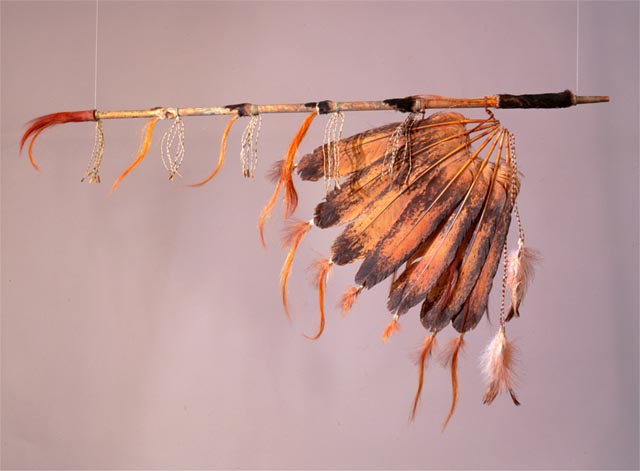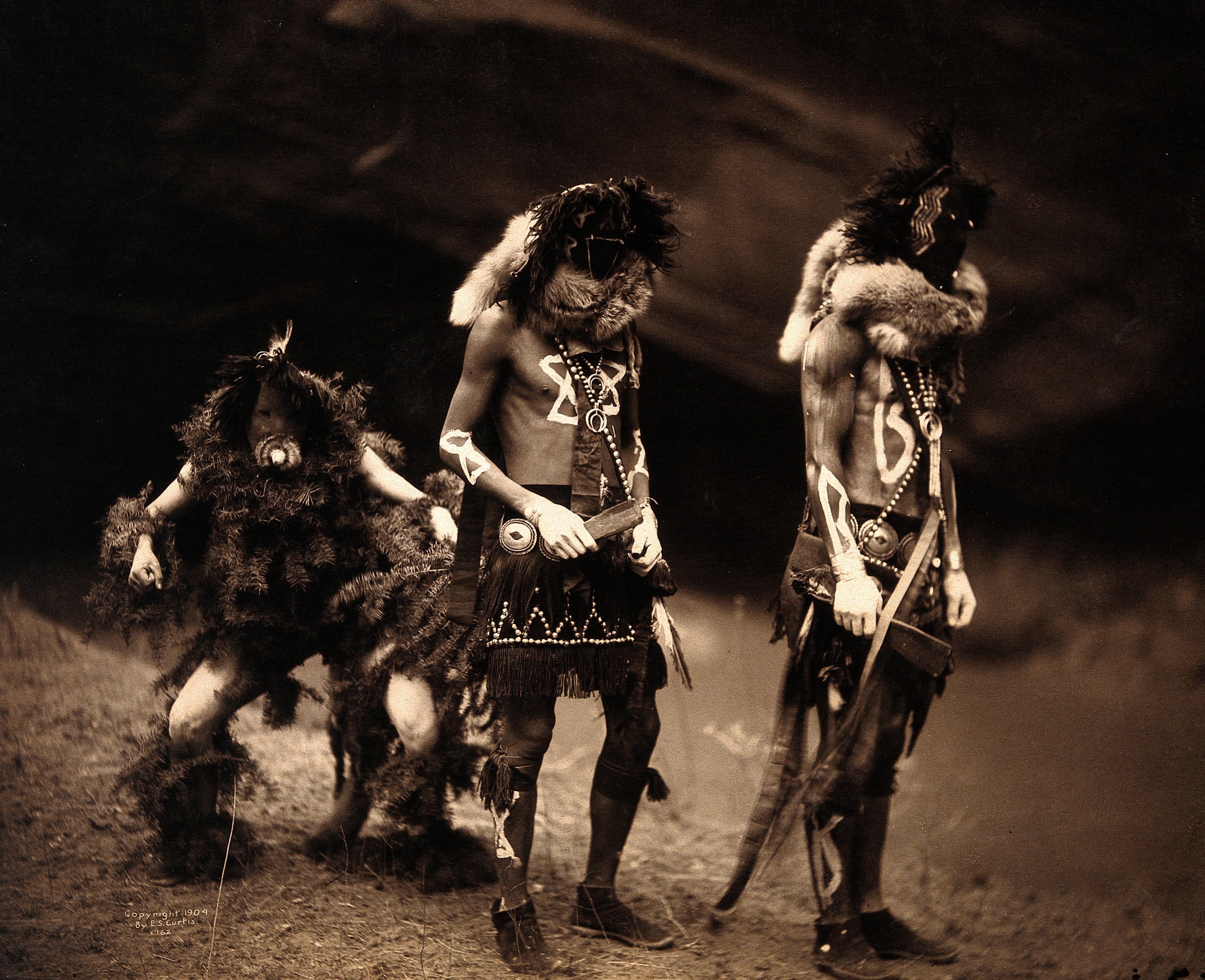|
Yuwipi
Yuwipi is a traditional Lakota healing ceremony. During the ceremony the healer is tied up with a special blanket and ropes, and the healer and their supporters pray and sing for the healing of the person who has asked for the ceremony. The ceremony may be performed for one person at a time, or for a small group of people together, depending on the severity of the case and the strength and ability of the medicine man leading the ceremony. History In Lakota culture, the ''yuwipi'' (pronounced yoo-WEE-pee) ceremony is held for both physical and spiritual healing. ''Yuwipi'' means "they wrap him up"''American Indian Religious Traditions: An Encyclopedia, Volume 2'' by Suzanne J. Crawford, Suzanne J. Crawford O'Brien, Dennis F. Kelley, ABC-CLIO; illustrated edition (June 29, 2005) or "they tie him up". The ceremony can be performed at any time of year when healing is needed. Yuwipi Ceremony Spirits The spirits called upon vary with individual medicine men, as well with the goals of t ... [...More Info...] [...Related Items...] OR: [Wikipedia] [Google] [Baidu] |
Medicine Man
A medicine man or medicine woman is a traditional healer and spiritual leader who serves a community of Indigenous people of the Americas. Individual cultures have their own names, in their respective languages, for spiritual healers and ceremonial leaders in their particular cultures. Cultural context In the ceremonial context of Indigenous North American communities, "medicine" usually refers to ''spiritual'' healing. Medicine men/women should not be confused with those who employ Native American ethnobotany, a practice that is very common in a large number of Native American and First Nations households.Alcoze, Dr Thomas M. Ethnobotany from a Native American Perspective: Restoring Our Relationship with the Earth" in '' Botanic Gardens Conservation International'' Volume 1 Number 19 - December 1999Northeastern Area State and Private Forestry,Traditional Ecological Knowledge: Sustaining Our Lives and the Natural World at ''United States Department of Agriculture, Forest S ... [...More Info...] [...Related Items...] OR: [Wikipedia] [Google] [Baidu] |
Chanunpa
Chanunpa (, ''Chanupa'', or ''Canupa''), is the Lakota language name for the sacred, ceremonial pipe and the ceremony in which it is used. The pipe ceremony is one of the Seven Sacred Rites of the Lakota people. Lakota tradition has it that White Buffalo Calf Woman brought the chanunpa to the people, as one of the Seven Sacred Rites, to serve as a sacred bridge between this world and Wakan Tanka, the "Great Mystery". The chanunpa is one means of conveying prayers to the Creator and the other sacred beings. The various parts of the pipe have symbolic meanings, and much of this symbolism is not shared with those outside the culture. While sacred pipes of various designs are used in ceremonies by a number of different Indigenous peoples of the Americas, chanunpa is specifically the Lakota name for their type of ceremonial pipe and ceremony. Other nations have their own names for their pipes and ceremonies, in their particular Indigenous languages. References See also *Ceremonial ... [...More Info...] [...Related Items...] OR: [Wikipedia] [Google] [Baidu] |
Ceremonial Pipe
A ceremonial pipe is a particular type of smoking pipe (tobacco), smoking pipe, used by a number of cultures of the indigenous peoples of the Americas in their sacred ceremonies. Traditionally they are used to offer prayers in a religious ceremony, to make a ceremonial commitment, or to seal a Covenant (historical), covenant or treaty. The pipe ceremony may be a component of a larger ceremony, or held as a sacred ceremony in and of itself. Indigenous peoples of the Americas who use ceremonial pipes have names for them in each culture's Indigenous language. Not all cultures have pipe traditions, and there is no single word for all ceremonial pipes across the hundreds of diverse Native American languages. Use in ceremonies Although often called "peace pipes" by Europeans (and, specifically, ''calumet de paix'', by the French), the smoking of a ceremonial pipe to seal a peace treaty is only one use of a ceremonial smoking pipe, by only some of the nations that utilize them. Various ... [...More Info...] [...Related Items...] OR: [Wikipedia] [Google] [Baidu] |
Religious Occupations Of The Indigenous Peoples Of North America
Religion is usually defined as a social- cultural system of designated behaviors and practices, morals, beliefs, worldviews, texts, sanctified places, prophecies, ethics, or organizations, that generally relates humanity to supernatural, transcendental, and spiritual elements; however, there is no scholarly consensus over what precisely constitutes a religion. Different religions may or may not contain various elements ranging from the divine, sacred things, faith,Tillich, P. (1957) ''Dynamics of faith''. Harper Perennial; (p. 1). a supernatural being or supernatural beings or "some sort of ultimacy and transcendence that will provide norms and power for the rest of life". Religious practices may include rituals, sermons, commemoration or veneration (of deities or saints), sacrifices, festivals, feasts, trances, initiations, funerary services, matrimonial services, meditation, prayer, music, art, dance, public service, or other aspects of human culture ... [...More Info...] [...Related Items...] OR: [Wikipedia] [Google] [Baidu] |
Native American Religion
Native American religions are the spiritual practices of the Native Americans in the United States. Ceremonial ways can vary widely and are based on the differing histories and beliefs of individual nations, tribes and bands. Early European explorers describe individual Native American tribes and even small bands as each having their own religious practices. Theology may be monotheistic, polytheistic, henotheistic, animistic, shamanistic, pantheistic or any combination thereof, among others. Traditional beliefs are usually passed down in the forms of oral histories, stories, allegories, and principles. Overview Beginning in the 1600s, European Christians, both Catholics and those of various Protestant denominations, sought to convert Native American tribes from their pre-existing beliefs to Christianity. After the United States gained independence in the late 1700s, its government continued to suppress Indigenous practices and promote forcible conversion. Governme ... [...More Info...] [...Related Items...] OR: [Wikipedia] [Google] [Baidu] |
Sioux Culture
The Sioux or Oceti Sakowin (; Dakota: /otʃʰeːtʰi ʃakoːwĩ/) are groups of Native American tribes and First Nations peoples in North America. The modern Sioux consist of two major divisions based on language divisions: the Dakota and Lakota; collectively they are known as the Očhéthi Šakówiŋ ("Seven Council Fires"). The term "Sioux" is an exonym created from a French transcription of the Ojibwe term "Nadouessioux", and can refer to any ethnic group within the Great Sioux Nation or to any of the nation's many language dialects. Before the 17th century, the Santee Dakota (; "Knife" also known as the Eastern Dakota) lived around Lake Superior with territories in present-day northern Minnesota and Wisconsin. They gathered wild rice, hunted woodland animals and used canoes to fish. Wars with the Ojibwe throughout the 1700s pushed the Dakota into southern Minnesota, where the Western Dakota (Yankton, Yanktonai) and Teton (Lakota) were residing. In the 1800s, the D ... [...More Info...] [...Related Items...] OR: [Wikipedia] [Google] [Baidu] |




